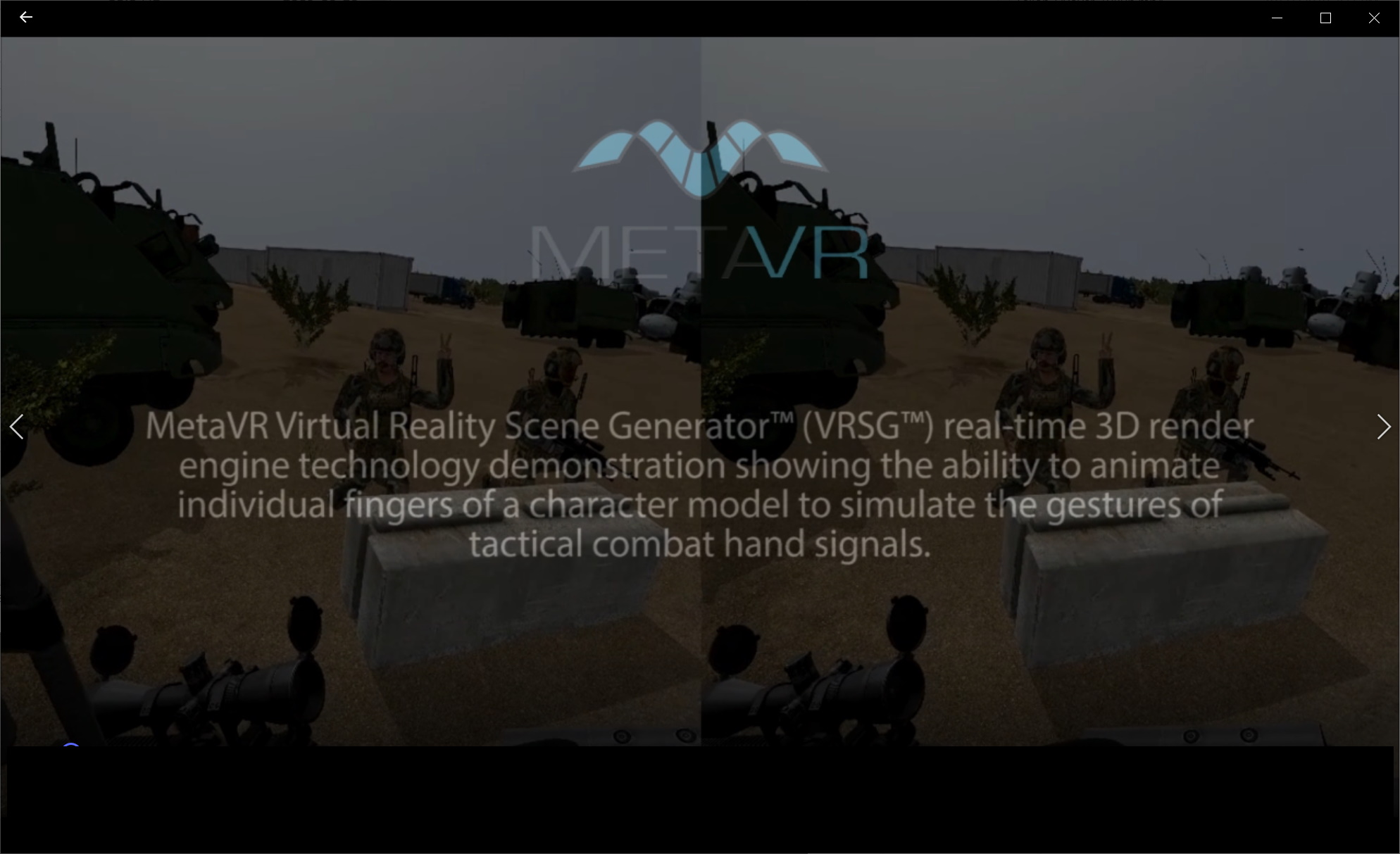MVRsimulation at I/ITSEC 2018
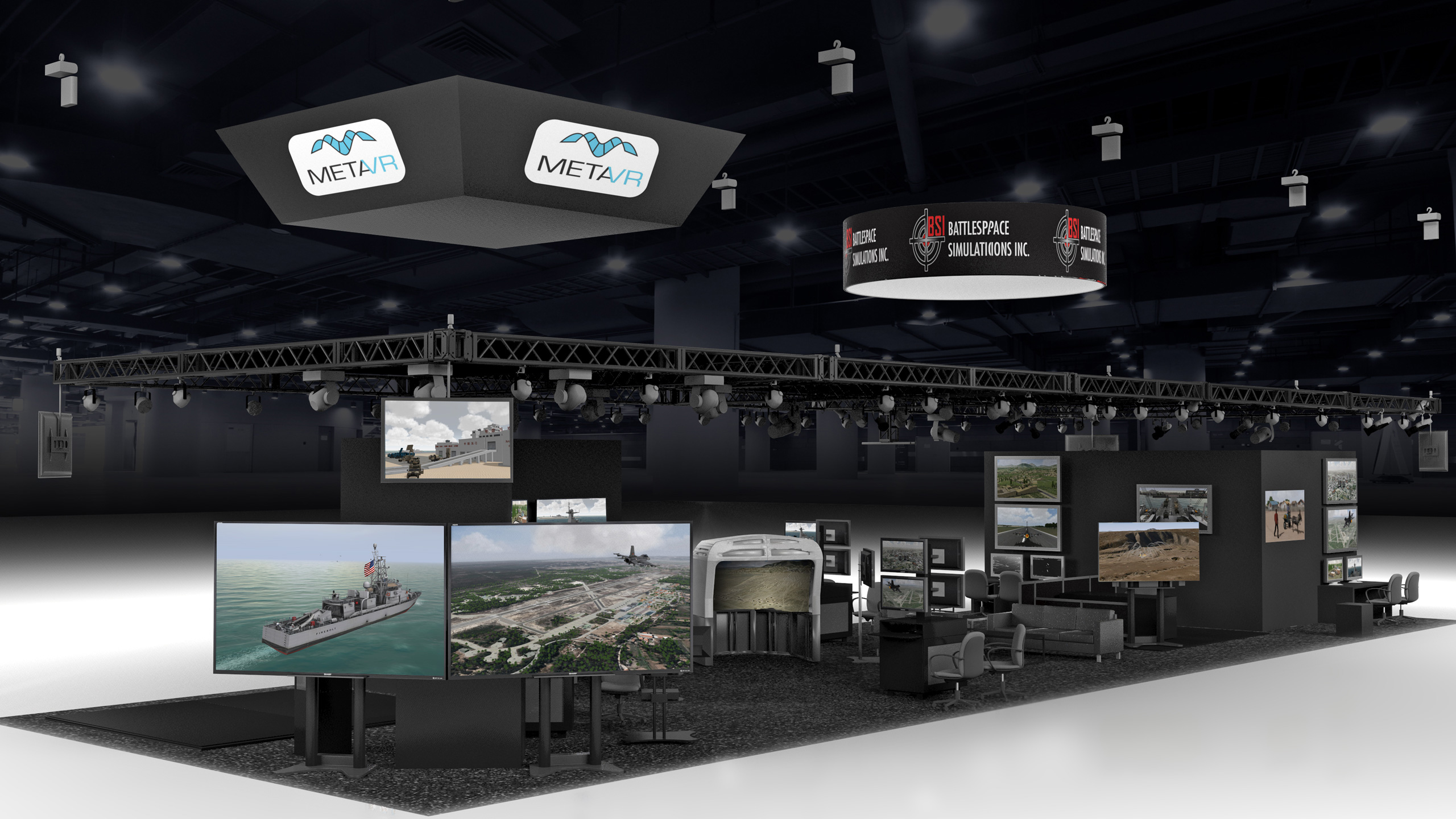
Illustration of MVRsimulation's booth at I/ITSEC 2018
MVRsimulation and its business partners exhibited their products and technology in Booth #1249 at the Interservice/Industry Training, Simulation and Education Conference and Trade Show (I/ITSEC), held November 26 - 30, 2018, at the Orange County Convention Center, Orlando, FL, USA.
MVRsimulation shared the booth with business partners Battlespace Simulations (BSI) and SRPaero (SRP).
MVRsimulation showcased scenarios rendered in VRSG in real-time, featuring 3D terrains, including new virtual terrain of Mischief Reef, VR demos with the HTC Vive Pro system that include character simulated tactical hand signals and augmented reality (AR), dynamic object-on-object shadows.
MVRsimulation demonstrated its terrain and visualization products and technologies that support applications ranging from unmanned air system (UAS) operator and Joint Terminal Attack Control (JTAC) training, to high-speed fixed-wing cockpit simulators, to littoral and marine-based operations to individual/first-person ground-level urban operations.
DEMONSTRATIONS IN THE BOOTH
With BSI and Immersive Display Solutions (IDSI), MVRsimulation demonstrated their Fallon Range Familiarization Solution with a spherical-display cockpit (flight) simulator, a VR headset, and MVRsimulation's geospecific 3D terrain of target ranges at the Fallon Range Training Complex (FRTC).
In addition to VRSG and MVRsimulation’s 3D content, the solution features IDSI’s new VisionStation 3 spherical desktop display, which surrounds the pilot trainee in a 1.8 meter diameter, 220° horizontal × 55° vertical immersive environment, and BSI’s Modern Air Combat Environment (MACE) for generating air and ground entities, threat planning, and 5-Line, 9-Line, and Call-for-Fire interfaces. In addition to providing the out-the-window views, sensor overlay and simulated thermal views, VRSG supplies correlated views in the HTC Vive Pro. The Fallon virtual target ranges were built with MVRsimulation's SUAS-captured 2 cm imagery. The terrain also contains a modeled Fallon Naval Air Station Van Voorhis Field. This collaborative COTS solution virtualizes the FRTC Inflight Guide for naval aviator range familiarization, providing a significant increase in flight readiness and savings to military aviation training programs.
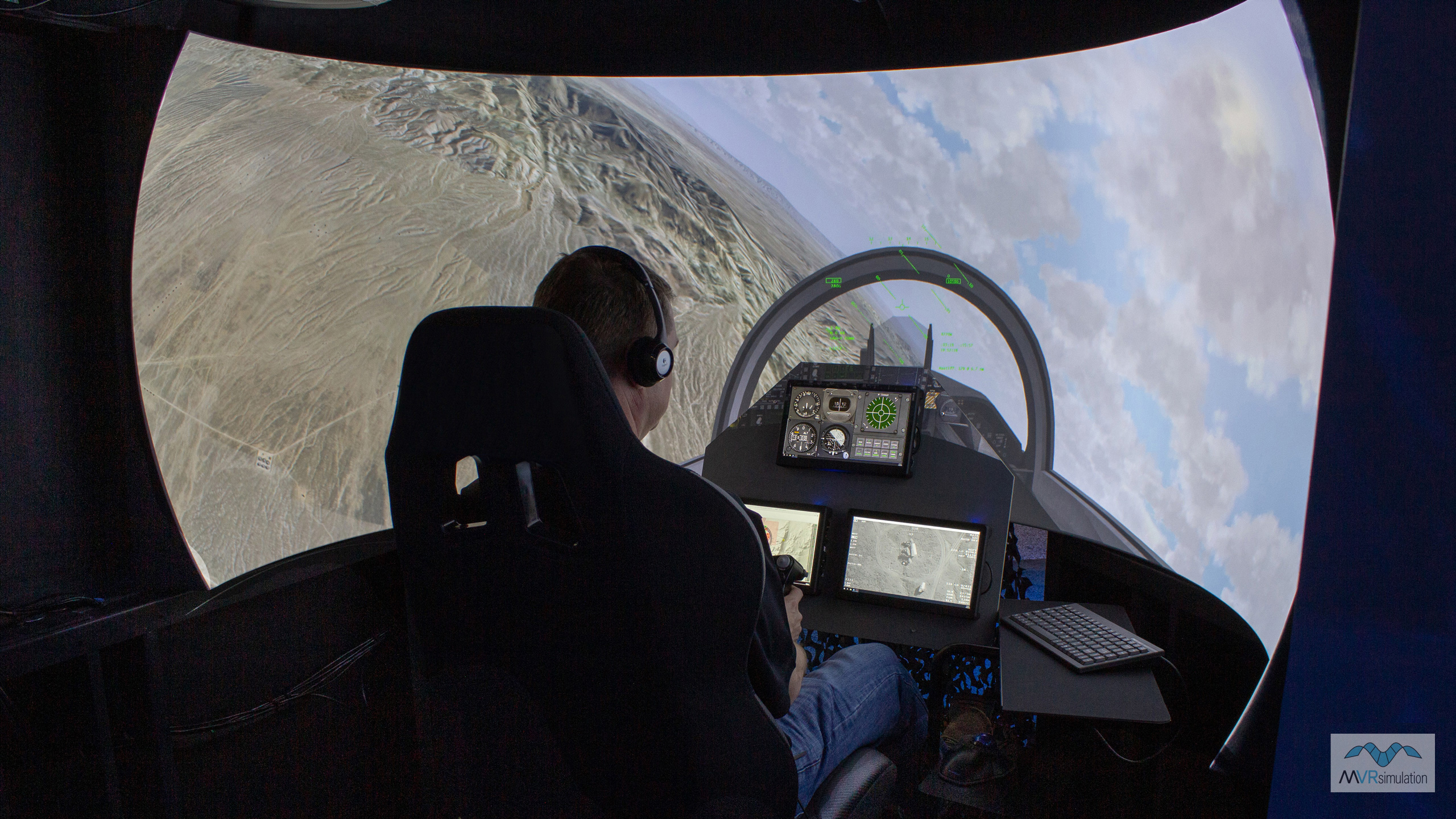
MVRsimulation, BSI, and IDSI's Fallon Familiarization Solution, featuring three VRSG channels, BSI MACE, and IDSI's VisionStation 3 pilot station. Real-time terrain is MVRsimulation's virtual 2 cm resolution Fallon Range.

Collins Aerospace's Coalescence with green-screen background, and Collins Aerospace's Coalescence with MVRsimulation VRSG.

Collins Aerospace's Coalescence with MVRsimulation VRSG, and the Collins Aerospace's Coalescence headset.
VRSG was running in other VR demos in the booth as well. One such demo was Collins Aerospace's Coalescence mixed-reality training system, which merges a trainee's real-world view with a synthetic environment to effectively train in a seamless, enhanced mixed reality. While wearing a VR HMD, such as the HTC Vive Pro during the demo, Coalescence enables a trainee to see one’s own hands and interact with objects and other people in the actual physical environment while immersed in the synthetic environment. The synthetic environment VRSG rendered in this joint demo was MVRsimulation’s Afghanistan terrain. This prototype collaboration is part of both companies’ participation in the Project RACER USAF’s AFWERX innovation initiative. RACER's purpose is to replicate current combat scenarios in a networked training environment allowing US forces to "Train where we fight!"
Another VR demo demonstrated the ability in the forthcoming release of VRSG version 6.4 to animate individual fingers using 16 bone hand models. These hand models are used with our character models to simulate the gestures of non-verbal commands and communication, such as tactical combat hand signals. BVH animations for the skinned hand models were created using Autodesk Motion Builder animation software.
The video below demonstrates two airborne hand signals from the Naval Aviation Flight Training Instruction manual (diagram from the manual shown at the start). In this real-time VRSG recording taken in an HTC-VIVE Pro headset, the pilot demonstrates the HEFOE (Hydraulic System, Electrical system, Fuel system, Oxygen system, Engine) signal for fuel system trouble and then the hand signal indicating how much fuel the plane is currently carrying.
MVRsimulation previewed other features from the forthcoming release of VRSG 6.4, including the display of dynamic lighting from vehicle headlights and flashlights via light lobes controlled via a DIS appearance bit.
MVRsimulation demonstrated two new 3D terrain datasets, built in round-earth VRSG terrain format with the latest version of MVRsimulation Terrain Tools version 1.5 for Esri ArcGIS:
- High-resolution geospecific 3D terrain of virtual Monte Real Air Base in Monte Real, Portugal. This terrain was built using 50 cm per-pixel resolution source imagery covering the entire country of Portugal and SRTM1 (30m) elevation source data; also bathymetry data of Portuguese coastline and western Spain. The runway was constructed with the new Runway tool in Terrain Tools 1.5. Other 3D culture includes taxiways, tarmacs, runway lights, signage, antennas, instruments, grass/tree vegetation, and several geospecific models including the control tower and other air base buildings along the flight-line. The air base models were built from publicly available photos and then geolocated on the terrain in Scenario Editor. The surrounding culture models were generated in Esri CityEngine from OpenStreetMap building footprint data. Light points follow the road network and building models contain emissive light-map textures for nighttime lighting. This terrain has been added to MVRsimulation's Europe 3D terrain, which is available to customers on active software maintenance.
- High-resolution model of Mischief Reef in the South China Sea, an occupied reef in the South China Sea, equipped with an HQ-9 missile defense system. This high-resolution terrain includes shoreline and bathymetry, which make the terrain ideal for sea-based and littoral training scenarios. The terrain model was compiled in Terrain Tools version 1.5 in our round-earth VRSG terrain format, taking advantage of the new Terrain Tools ability to integrate an external terrain model such that it is treated as native terrain for both rendering and mission functions. Geospecific culture includes 249 buildings, a runway, 20,377 vegetation elements, 2,632 miscellaneous shipping containers, turrets, airport instruments, fences, and stones are all from MVRsimulation's 3D model libraries, and placed with MVRsimulation Scenario Editor 1.6. Note that due to the sensitivity and availability of high resolution overhead imagery of the occupied reefs in the South China Sea, we publicly showed terrain without geographically specific imagery.
MVRsimulation also demonstrated VRSG's 3D ocean simulation in scenarios featuring many naval models from our military model library of 159 naval vessels on geospecific terrain/ocean body of the Strait of Hormuz and the littoral area of the port city of Kismayo, Somalia. Many vessel models have deck details modeled to first-person level.
Other demonstrations in the booth included:
- High-resolution geospecific 3D terrain of the Somalia port city of Kismayo. A relevant geospecific terrain for coordinated UAS and JTAC close-air-support training. Demo scenarios include amphibious and close-air-support missions. The amphibious scenario highlights VRSG's 3D ocean simulation and MVRsimulation's growing collection of U.S. naval models.
- High-resolution geospecific 3D terrain of a mountainous region in Kabul province, Afghanistan. The modeled village of Khairabad includes 650 custom-built 3D structures that match footprints on the source imagery. Many structures have multiple damage states, demonstrated in scenarios that feature close-air-support missions with UAS overwatch and strikes, and pattern of life activity. These scenarios contain many of MVRsimulation's newest military ground vehicles.
- High-resolution geospecific 3D terrain and modeled airfields in Continental US plus Alaska and Hawaii (CONUS++). The CONUS++ demos included flythrough sequences on 28 modeled airports and airfields, with high-resolution imagery and geospecific and geotypical cultural content.
Also in the booth, BSI demonstrated the latest version of their Modern Air Combat Environment (MACE), a holistic computer-generated/semi-automated forces (CGF/SAF) application used throughout the world for accredited Joint Fires training systems, electronic warfare training, and threat/entity generation. In addition, BSI demonstrated their new Augmented Reality Mission Observation and Rehearsal (ARMOR) tool, their low-cost, full-featured PC-based Viper DIS radio, and DIScord recorder for after action review and debrief.
SRPaero (SRP), the creators of MVRsimulation's SUAS for collecting sub-inch geospecific imagery for real-time 3D terrain, demonstrated features of their latest SUAS built for autonomous aerial surveying, a VTOL hybrid. For imagery data collection, the SUAS captures 2 cm per-pixel resolution images that can be used with accurate elevation data to compile terrain at 2 cm resolution. The resulting synthetic environment can then be rendered in VRSG. SRP showed examples of terrain that MVRsimulation built from the 2 cm imagery the SUAS collected at two target ranges at NAS Fallon and at the Prospect Square area of Yuma Proving Ground. SRP operated the aircraft for imagery data collection at both sites.
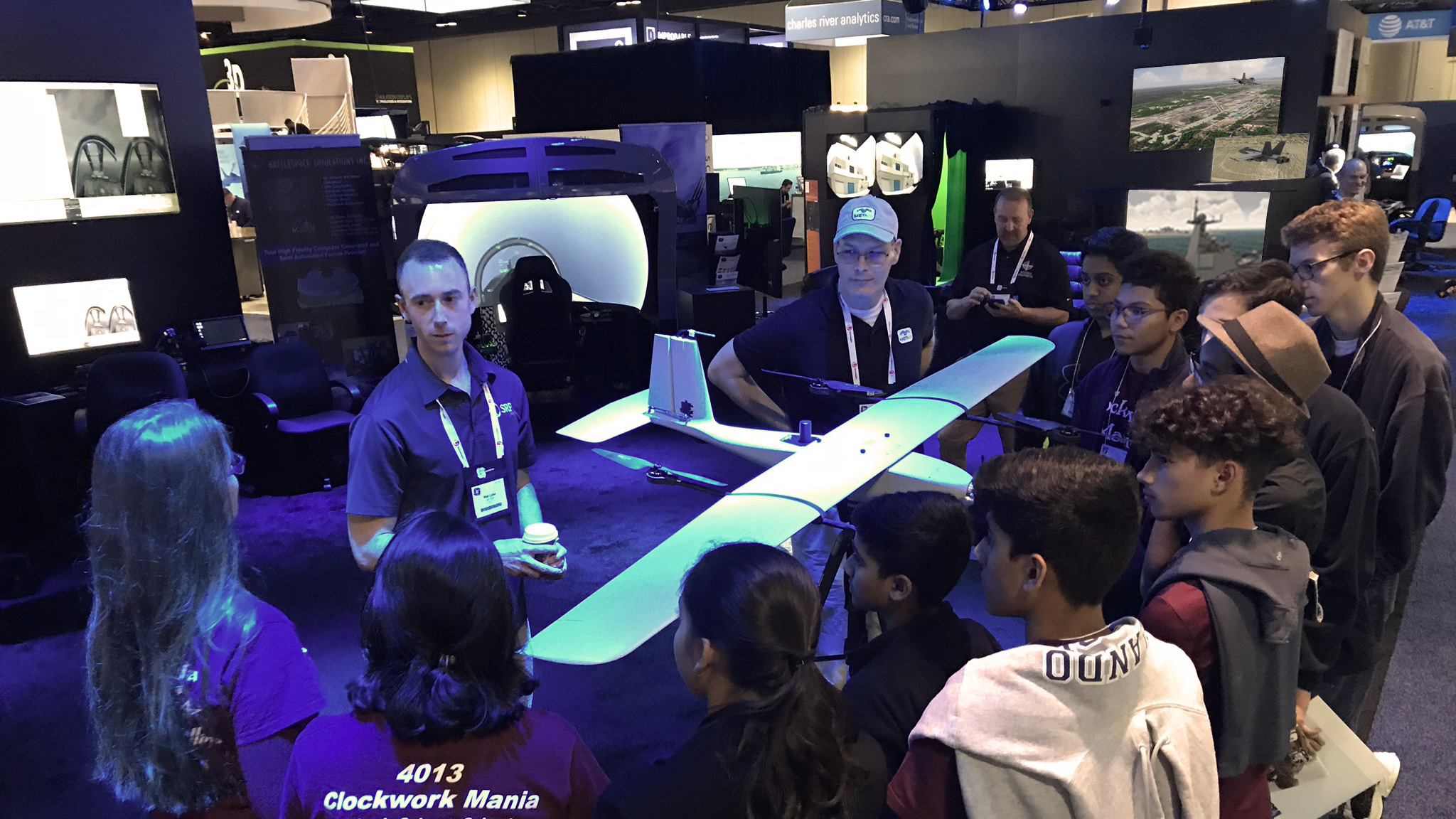
SRPaero (SRP), the creators of MVRsimulation's SUAS for collecting sub-inch geospecific imagery for real-time 3D terrain, in MVRsimulation's booth at I/ITSEC 2018.
MEDIA COVERAGE
- Shephard Media: I/ITSEC 2018:
MetaVR highlights benefits of geo-specific terrain - Halldale MS&T:
MetaVR to Demonstrate Latest Technology and Products at I/ITSEC 2018 - MÖNCH Training & Simulation Channel:
I/ITSEC 2018: “Defeating Inferior Software” - I/ITSEC 2018: MetaVR Demonstrates 3D Terrain Built With 2cm Imagery
- I/ITSEC 2018: SATB - METAVR
- I/ITSEC Show Daily, Thursday, November 29, 2018, page 12:
MetaVR and Partners Generate Training Realism
MVRsimulation Customers and Business Partners at I/ITSEC 2018
Elsewhere at I/ITSEC, VRSG was used in the following demos:
- The 505 Command and Control Wing demonstrated VRSG in their JTC Desktop trainer in booth #801 QuantaDyn's booth. (This system is based on QuantaDyn's DT-100 Desktop JTAC Training System.) Demonstrations included Types 1, 2, and 3 control, terminal guidance operations using a ground based laser system, as well as coordination with a wide range of virtual and constructive assets.
- AFRL's Warfighter Readiness Division which uses VRSG in multiple training testbed programs, demonstrated their Secure Live, Virtual, and Constructive (LVC) Advanced Training Environment (SLATE) project in a public demo event at the conference, on Thursday, November 29. VRSG is used in the virtual component of SLATE, although the demo did not feature this component.
- Air National Guard demonstrated VRSG in booth #1780 in the LC-130 Multi-Mission Crew Trainer and the Micro-BOSS KC-135 air refueling boom operator desktop simulator.
- Bugeye Technologies demonstrated in booth #2261, by invitation, their prototype AH-64 Apache Reconfigurable Cockpit Virtual Trainer (RVCT), which in addition to VRSG, is integrated with ZedaSoft's CBA for Simulation framework.
- Immersive Display Solutions (IDSI) demonstrated VRSG in booth #1273 on its VisionFlex bendable screen display featuring a 150-degree FOV and two Barco 4K FS 40 projectors. (As mentioned above, IDSI's new VisionStation 3 was featured in the Fallon Familiarization Solution demo in MVRsimulation's booth.)
- PLEXSYS Interface Products demonstrated VRSG in booth #1473 with the launch of ASCOT 7 CGF platform in which VRSG renders the 3D environment. Also, PLEXSYS and ImmersaView demonstrated SimVisuals with VRSG.
- QuantaDyn demonstrated VRSG in booth #801 in demonstrations of its QFires series of JTAC simulator training devices. Also, as mentioned above, the 505 Command and Control Wing demonstrated in QuantaDyn's booth their JTC Desktop trainer.
- Sony Electronics demonstrated VRSG in booth #2139 two scenarios on their 16 ft. x 9 ft. Crystal LED video wall, which utilizes ultrafine LEDs.
- TRU Simulation + Training demonstrated VRSG in booth #1201 in multiple simulations that show aircrew joint close air support (JCAS) training solutions in a networked battlefield, integrating simulators of a Bell V-280 and Textron Aviation Defense's AT-6B Light Attack Aircraft:
- V-280 Valor cockpit simulator, with a three 82" LCD screen display and a sensor channel.
- VR demonstrations, with an HTC Vive Pro system.
- AT-6 Wolverine cockpit simulator, with IDSI's new VisionStation 3, a compact partial dome display and projection system. - U.S. Air Force Training Systems Product Group demonstrated in booth #1533 a distributed mission operation (DMO) aerial refueling exercise featuring a C-17 receiver and a KC-135 tanker running in the Micro-BOSS KC-135 air refueling boom operator desktop simulator. A cockpit simulator running both VRSG and BSI MACE, and emulating various air platforms, was also included in the distributed exercise.
- Zedasoft demonstrated VRSG in booth #1573 in their new Eyebox AR solution, along with their F-16 high-fidelity cockpit simulator. VRSG rendered the scene in the SA Photonics SA-92 helmet-mounted display worn by the pilot trainee, integrated with ZedaSoft’s CBA for Simulation framework. This solution enables the trainee to fully interact with the physical cockpit. They also demonstrated VRSG in their Reconfigurable Desktop System (RDS) simulator.

TRU Simulation + Training's AT-6 Wolverine cockpit simulator, with MVRsimulation's VRSG and IDSI's VisionStation 3, a compact partial dome display and projection system.
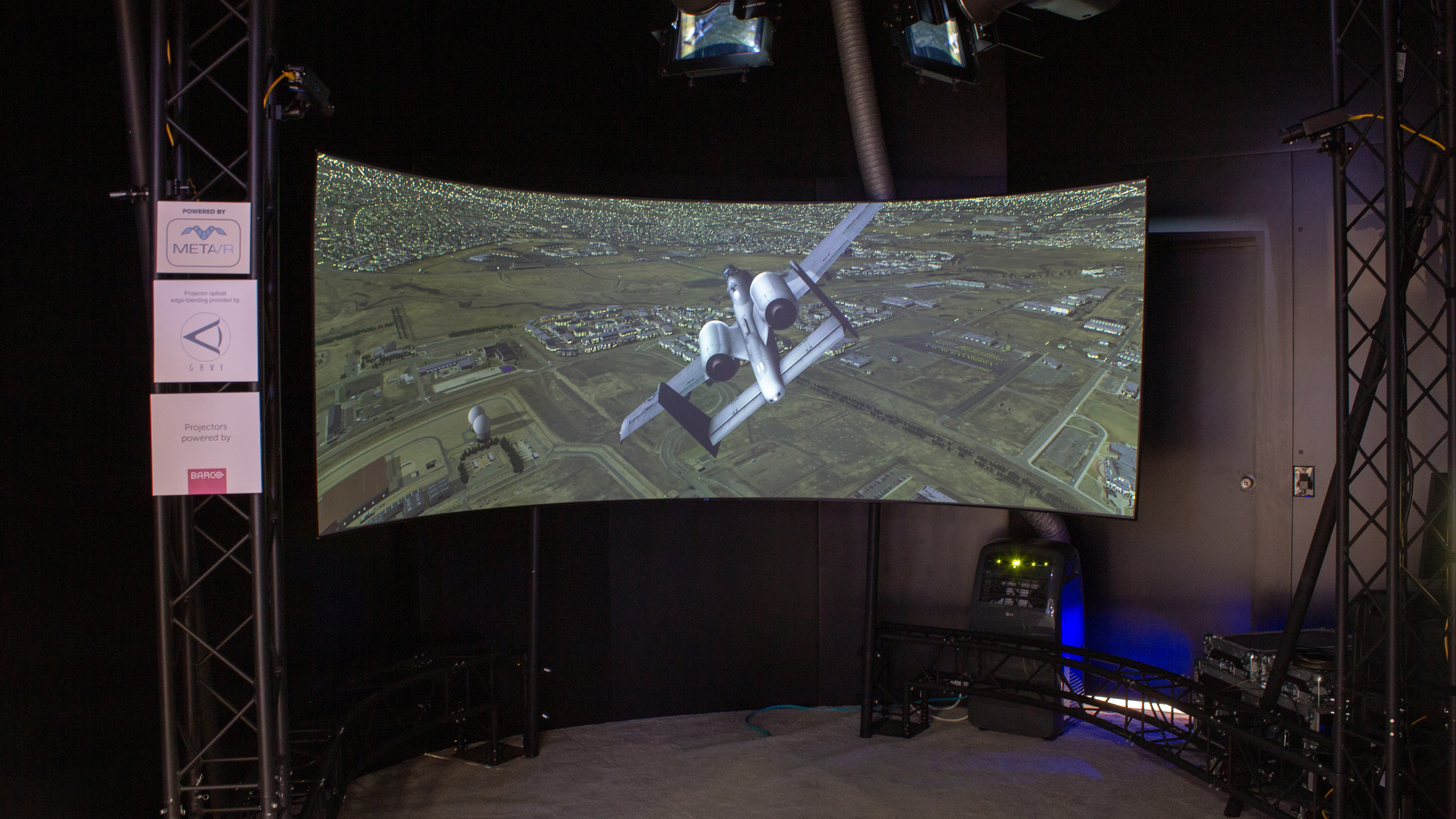
IDSI VisionFlex bendable screen display with VRSG, featuring a 150-degree FOV and two Barco 4K FS 40 projectors.

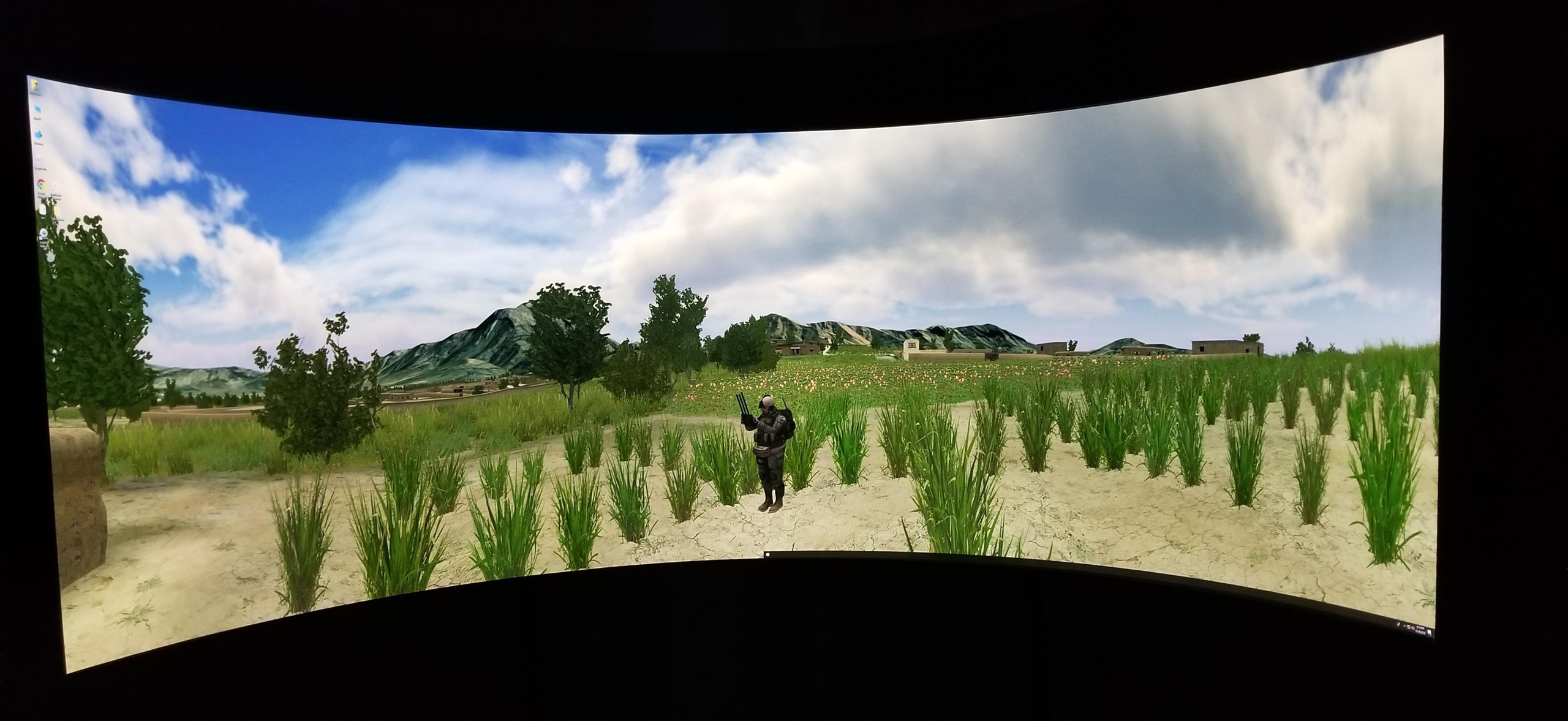

The past event described on this page contains the previous name of our company. Our company name is now MVRsimulation, per our announcement of September 1, 2021.

